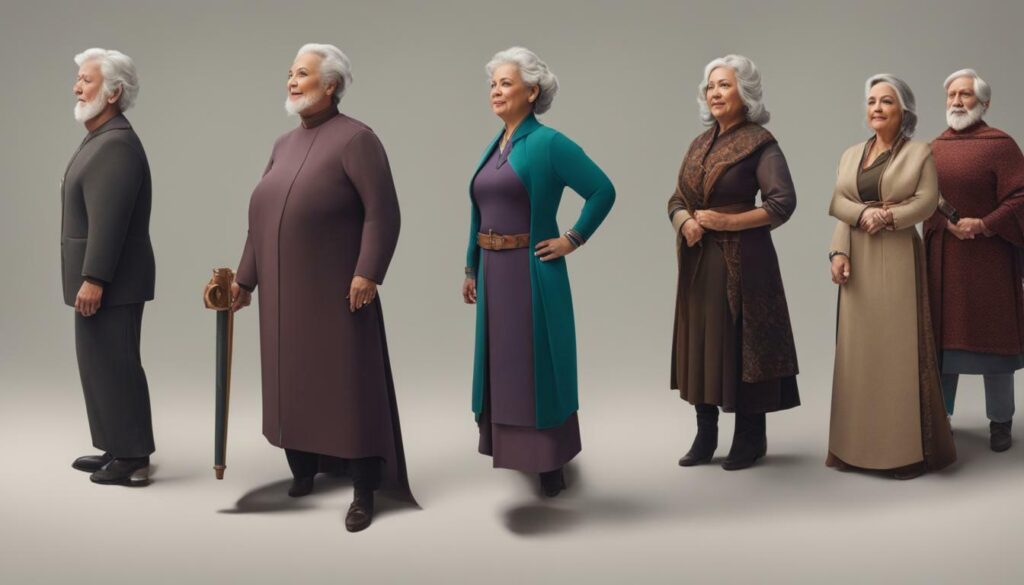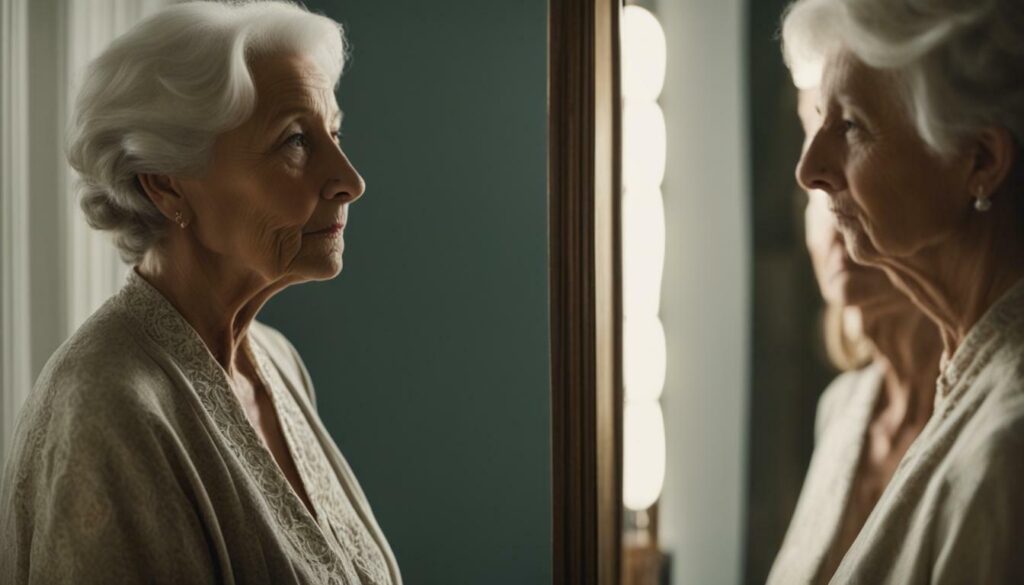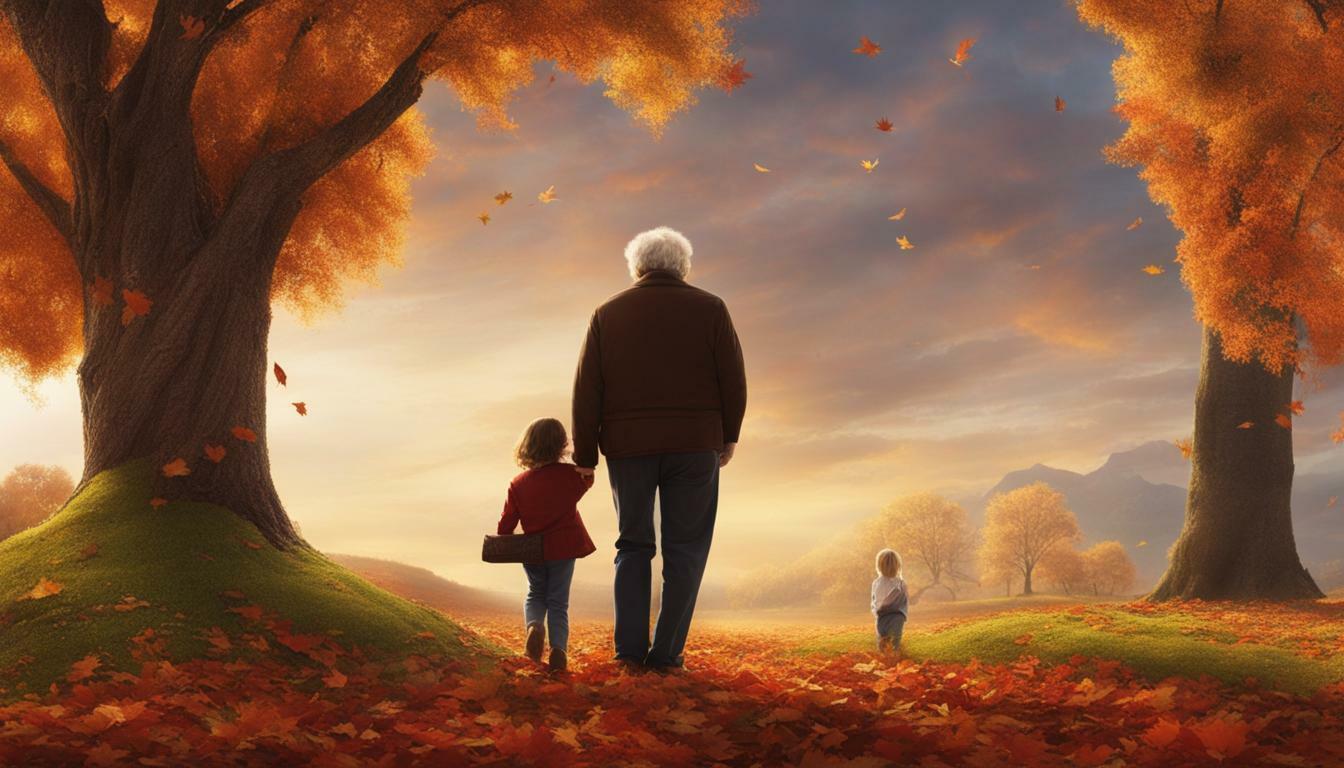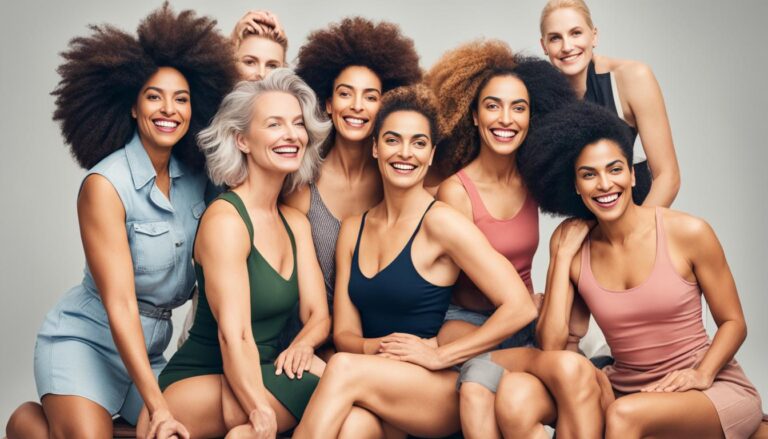Does Kibbe Body Type Change With Age?
The Kibbe body type system has gained popularity for its ability to categorize individuals based on their physical characteristics and personality essence. This system evaluates bone structure, flesh, and facial features to place individuals within one of thirteen different Image IDs. But what about the impact of aging on these body types? Does the Kibbe body type change with age? Let’s explore this concept and gain a deeper understanding of how aging may affect our body types within the Kibbe system.
Key Takeaways:
- The Kibbe body types do not change with age. The classification remains consistent, even as we grow older.
- While weight gain may make certain aspects of an individual’s body type more evident, it does not alter the overall classification.
- Factors like age, hormones, and pregnancy may slightly influence the sub-type within an Image ID, but not the ID itself.
- The Kibbe system encourages embracing and honoring our natural line, rather than trying to change or counteract it.
- Understanding our Kibbe body type can help us make better choices when it comes to dressing and styling ourselves.
Now that we have a better understanding of the Kibbe body type system and how it relates to aging, let’s delve deeper into the details of each body type and the potential impact of aging on them.
Understanding the Kibbe Body Type System
The Kibbe body type system evaluates factors such as bone structure, flesh, and facial features to classify individuals into one of thirteen Image IDs. This system goes beyond the typical body shape categories like hourglass or pear, taking into account a person’s overall essence and physical characteristics to create a unique profile. By understanding your Image ID, you can better understand your natural line and dress in harmony with it.
Each Image ID has its own set of recommendations for clothing, hairstyles, and makeup to enhance the individual’s natural beauty. It’s important to note that the Kibbe body type system does not focus on changing or counteracting one’s natural features. Instead, it aims to embrace and honor them. This means that as you age, your body type remains constant, but certain aspects of it may become more evident.
While weight gain can affect the perception of one’s body type, it does not change the underlying classification. The Kibbe system recognizes that our bodies naturally change over time, and factors like age, hormones, and pregnancy may slightly alter the sub-type within an Image ID. However, the core essence of your body type remains the same.
To fully understand your Kibbe body type and how age might affect it, it is recommended to consult with a certified Kibbe analyst who can provide personalized guidance based on your unique characteristics. Embracing your natural line and dressing in harmony with it can enhance your self-confidence and help you feel comfortable and stylish in your own skin.

The Impact of Aging on Kibbe Body Types
While the Kibbe body types themselves do not change with age, certain factors like weight gain, hormones, and pregnancy may slightly alter the sub-type within an individual’s Image ID. The Kibbe body type system evaluates bone structure, flesh, and facial features to categorize individuals into one of thirteen different Image IDs. These IDs, such as Dramatic, Romantic, or Gamine, remain consistent throughout a person’s life.
However, it is important to note that as we age, our bodies naturally undergo changes. Weight gain, for example, can impact the overall appearance of an individual’s body and may make certain aspects of their Kibbe ID more pronounced. This does not mean that their ID has shifted, but rather that certain features within their ID have become more evident. It is essential to embrace and honor the natural line of your body, dressing in harmony with your ID rather than trying to fight against it.
Furthermore, factors like hormones and pregnancy may also play a role in slightly altering the sub-type within an Image ID. Hormonal changes that occur with age can influence aspects of the body, such as breast and hip size, which may have a subtle effect on the sub-type within an ID. Similarly, pregnancy can temporarily modify the body’s proportions and shape, potentially leading to a slight adjustment in the sub-type. However, these changes are still within the framework of the individual’s existing Kibbe ID.

Table: Summary of the Impact of Aging on Kibbe Body Types
Below is a table summarizing the key points discussed regarding the impact of aging on Kibbe body types:
| Factor | Impact on Kibbe Body Types |
|---|---|
| Weight Gain | May make certain aspects of an individual’s ID more pronounced. |
| Hormonal Changes | Can subtly alter the sub-type within an Image ID. |
| Pregnancy | Temporary changes in body proportions may lead to a slight adjustment in the subtype. |
It is important to remember that the Kibbe body type system is designed to celebrate and embrace individuality, helping individuals dress in a way that enhances their natural beauty. Rather than trying to change one’s body type, the focus is on working with the inherent features and characteristics of each Image ID to create a harmonious and balanced look.
Conclusion
The Kibbe body type system remains consistent throughout one’s lifetime, but factors like weight gain and hormonal changes can affect the sub-type within an Image ID. It is important to embrace and honor one’s natural body line and dress in harmony with it, rather than trying to change or counteract it.
The Kibbe body types, based on physical characteristics and personality essence, provide individuals with a framework to understand and flatter their unique features. The system evaluates bone structure, flesh, and facial features to place individuals within one of thirteen different Image IDs. While weight gain may make certain aspects of an individual’s ID more evident, it does not change the overall classification.
Age, hormones, and pregnancy may slightly alter the sub-type within an ID, but not the ID itself. The Kibbe system acknowledges that our bodies naturally change over time, and it encourages individuals to adapt their personal style in line with these changes. By embracing and honoring our natural line, we can embrace our individual beauty and confidently express ourselves through clothing choices.
In a society that often pressures us to conform to certain body ideals, the Kibbe body type system offers a refreshing perspective. It reminds us that beauty comes in all shapes and sizes and that our unique features should be celebrated rather than hidden or altered. By understanding and working with our natural body lines, we can dress in a way that enhances our confidence and allows us to feel our best every day.
FAQ
Does Kibbe Body Type Change With Age?
The Kibbe body types, which are based on physical characteristics and personality essence, do not change with age.
What is the Kibbe Body Type System?
The Kibbe body type system evaluates bone structure, flesh, and facial features to place individuals within one of thirteen different Image IDs.
Can Aging Affect Kibbe Body Types?
Factors such as age, hormones, and pregnancy may slightly alter the sub-type within an ID, but not the ID itself.
How does the Kibbe Body Type System encourage embracing one’s natural line?
The Kibbe system focuses on embracing and honoring one’s natural line and dressing in harmony with it, rather than trying to change or counteract it.







3 Comments
Comments are closed.